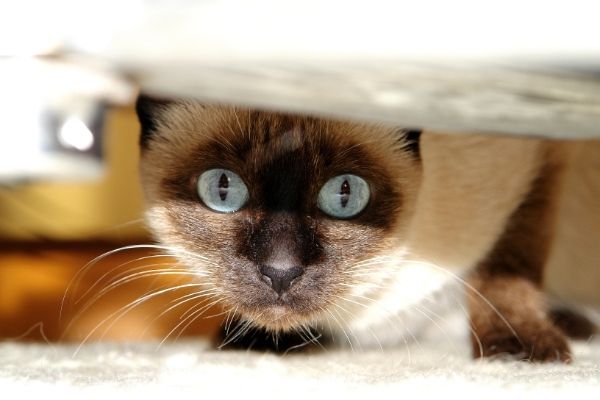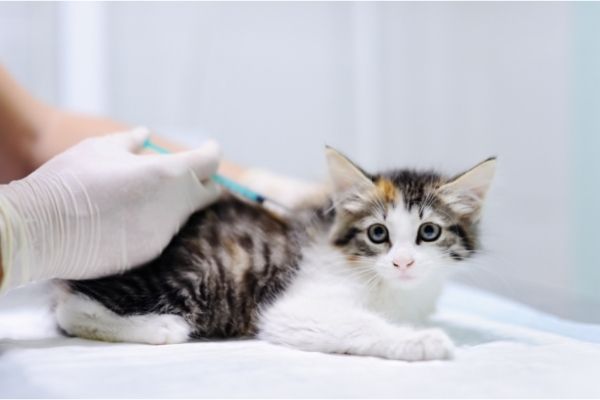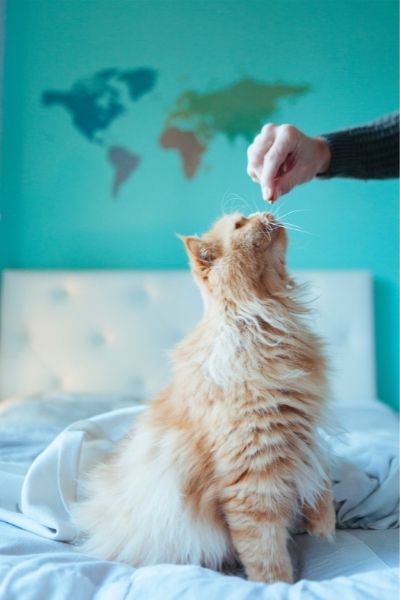Nutrition is an important aspect of your cat’s wellbeing. Depending on her age (kittens and elderly cats should not be given the same food), size, weight, and activity levels, she must be served the right meals at the proper times so that her organs perform at their best. But what if your cat is not eating? What could be the reasons for her loss of appetite? More importantly, what should you do if she doesn’t want to eat?
This blog post will discuss all the possible reasons why your cat is not eating, which is also termed as anorexia. To cat parents and foster carers reading this, remember that the article is only a guide. Waldo’s Friends wants to equip you with all the information you need to help your kitten or cat. Consult with a veterinarian as soon as you notice any major changes in your cat’s eating habits, especially if it is accompanied by vomiting, diarrhea, and other unusual behaviour.
In this post, we share:
- The reasons why your cat is not eating
- How to encourage your cat to eat
- When to take your cat to the vet
The reasons why your cat is not eating
1 Your cat is sick.
An underlying illness may be the main reason why your cat is not touching her food. Cats are known for being creatures that hide their sicknesses, so a lack of appetite may be a huge indicator that something is wrong. Possible illnesses she may be experiencing include something as simple as a dental or joint pain, or a more serious problem such as cat flu, diabetes, fever, hyperthyroidism, infections, intestinal problems, kidney disease/failure, liver problem, and pancreatitis.
2 Your cat feels stressed.
Cat anorexia may be triggered by external factors. Examples include a change in surroundings (especially when you transfer homes), the presence of new people or pets (learn how to introduce a kitten or dog to a cat), or even a shift in her daily routine. These seemingly subtle differences can cause a cat to feel stressed, anxious, or even depressed.

3 Your cat does not like her food.
Suddenly changing your cat’s food may cause her to ignore it. When switching dry kibble or wet food, give your cat at least a week to get used to the new offering. Do a slow transition by mixing the old food with a small amount of the new food, then gradually adjusting the ratio.
4 Your cat is feeling nauseous.
Riding a car, boat, or airplane can cause motion sickness and lead your cat to lose her appetite. The uneasy feeling in her stomach will make it hard for her to keep food down. Other symptoms of motion sickness include yawning, whining, diarrhea, uneasiness, and apprehension. Additionally, your cat may become afraid of the vehicle and exhibit signs of motion sickness even when it is not moving.
5 Your cat just got vaccinated or is taking new medication.
After your cat gets vaccinated, she may experience a decrease in appetite, which is common but temporary. It shouldn’t be cause for concern since her full appetite would return in a few days. Similarly, medication may also suppress appetite, so before your cat takes anything new, ask your veterinarian for a list of expected side effects.

6 Your cat has stomach-related issues.
Stomach sensitivities, constipation, indigestion, and/or digestive obstruction may also be possible reasons why your cat isn’t touching her food. Cats that like to chew on string, ribbon, rubber band, and tinsel usually end up with gut blocks.
7 Your cat’s metabolism is changing.
It is normal for the appetite and eating habits of a cat to change as she grows older. Mature and senior cats are not as active as kittens, so they do not need to consume as many calories. They also do not burn calories as fast as their younger counterparts. As such, they may be naturally eating less.
How to encourage your cat to eat
Now that you’ve read all the possible reasons why your cat is not eating, you can try these simple tips and tricks to urge her to eat:
- Heat the food to match her body temperature (about 38°C)
- Mix fish oil, cooked egg, or clean broth with your cat’s heated food (do not include salt, onion, or garlic, which are toxic to cats)
- Feed a small amount of liver or canned tuna to stimulate her appetite
- Provide fresh food for every meal (don’t leave it out to harden)
- Offer food with strong scents such as sardines
- Serve her different brands of pet food to see which one she responds to (rotating brands two to four times a year can help your cat become less finicky and be less prone to food allergies and intolerances)
- Hand-feed your cat and check her nose to make sure it does not have any blocks or discharges

When to take your cat to the vet
Monitor your cat’s food intake regularly. If she does not eat anything for more than one day, take her to the veterinarian or emergency animal clinic. VCA Hospitals warns that anorexic cats may be prone to developing hepatic lipidosis, a liver disease that can be lethal if it is not treated immediately.
Read more cat-related posts in our blog! Learn the possible reasons why cats vomit white foam, why they vomit after eating, or why they are always hungry.
Leave a comment
Your email address will not be published. All fields are required.